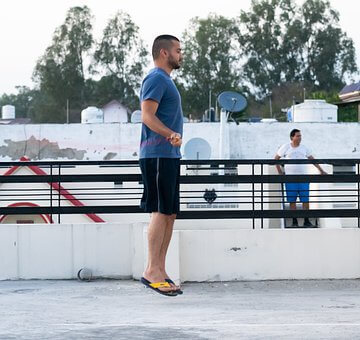Some Alternatives of Walking for Exercise

Walking is one of the suggested types of aerobic exercise. It's simple and beneficial, and almost anybody can do it. Walking has various advantages.
People who walk routinely will tell you that it can be the best type of activity.
However, there's one little issue. Waking can be exhausting. Walking may not be the best for some people, particularly for people with knee wounds or osteoarthritis.
There are various alternatives for individuals who can't or don't wish to take up walking or running as an exercise schedule.
These low-impact options are not as burdening on the body but give practically similar outcomes as waking.
1. Biking or Cycling:

Regardless of whether stationary or mobile, biking is an extraordinary elective exercise for running.
Cycling is quick moving and can give a similar intensity as walking, without putting a similar measure of strain on your joints.
With biking or cycling, you can control your exercise's speed and intensity to modify it to your requirements. Spin classes are additionally powerful for a high-intensity bicycle workout.
Biking is simple and easy on the joints and it promotes leg strength and balance. In addition, it consumes a greater number of calories than walking, so it's better for weight reduction.
2. Tennis:

This game requires you to be quick on your feet, so it improves response time, muscle tone, and strength.
3. Swimming:

Like biking, swimming is likewise a low-impact option in contrast to walking or running. It's incredible for cardiovascular wellness, perseverance, and muscle strength.
Another advantage: no sweat at all! Like walking, it's a total body workout, yet it's simple on the joints because the water acts as the opposition.
As indicated by research, swimming improves muscle strength, adaptability, and equilibrium. It's beneficial for people of all ages, even those with weight impediments and asthma.
An examination initially conducted suggests that swimming can really improve the vigorous wellness levels of people experiencing asthma.
4. Elliptical Trainer:

For individuals hoping to rest their joints, the elliptical trainer is probably the best type of activity.
An elliptical machine works your upper and lower body, so you burn more calories in a more limited time frame and you can target explicit leg muscles.
They allow you to imitate the movement of running with no high effect on your joints. This essentially implies you are strengthening the same muscles that you use for running or walking.
Try and focus on utilizing a similar motion on the trainer as when you normally run. For best outcomes, you should also follow the same timetable.
5. Zumba:

Zumba gives a complete body cardio exercise that consolidates customary aerobic activities with Latin-style dance.
The dance takes coordination, so it improves fine motor abilities and balance, as well as strength and adaptability. The classes offer a fun and motivational environment and require no dance experience.
Classes incorporate peppy music and are normally high-energy. It's not difficult to forget to remember you are in a Zumba class to work out or exercise.
6. Stretch Training:

Stretch training, short bursts of an assortment of high-intensity exercises mixed with times of rest, improves cardiovascular wellness, builds muscle, and consumes fat.
7. Jumping Rope:

A playground top pick, jumping rope is extraordinary for adults too because it is simpler on the joints than running however raises the pulse for most extreme cardiovascular advantages.
8. Aerobics Dancing:

Since the 1980s wellness and fitness craze, aerobic exercise has been a mainstream high-impact activity. Like walking, it works both the upper and lower body and gets the pulse up.
It's suggested by researchers as one of the alternative activities for walking. It sheds pounds, increases endurance, strengthens the heart, and manages chronic conditions, for example, hypertension.
9. Weight Lifting:


Lifting weights or resistance training not just builds muscle, it improves bone wellbeing and balance.